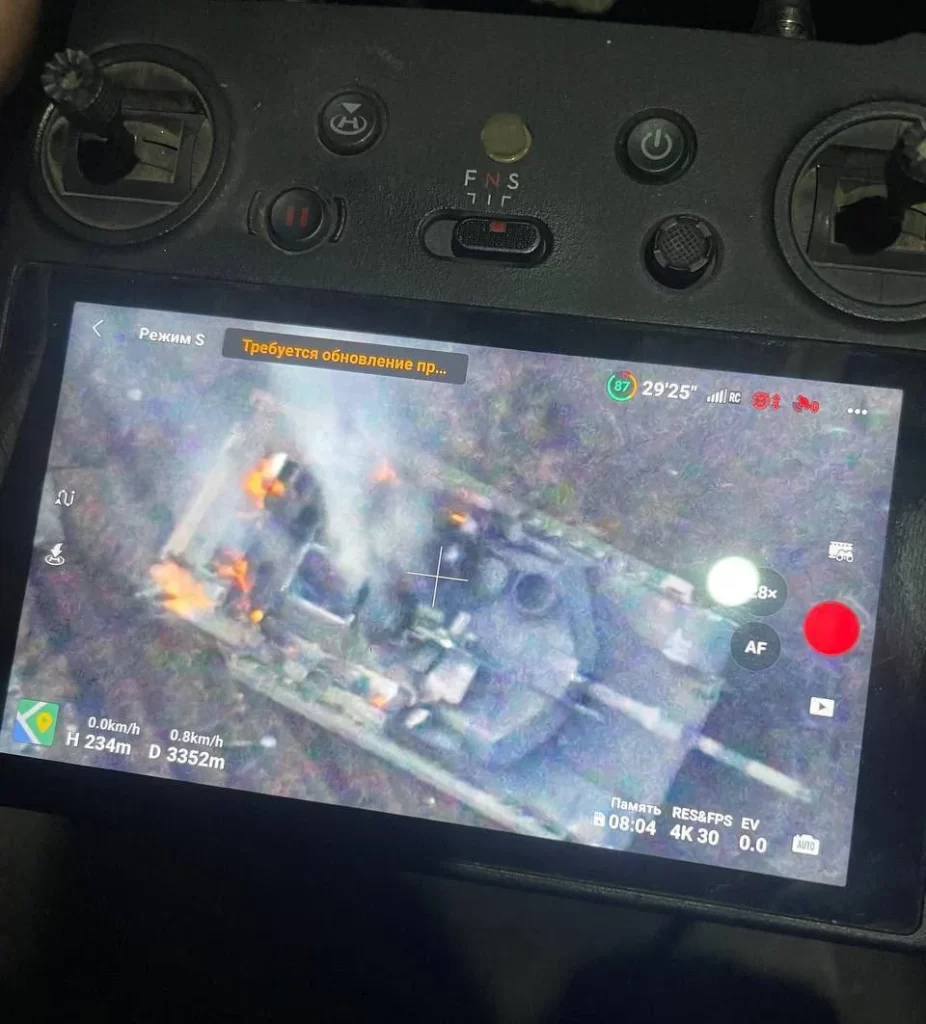Russian forces recently employed the Piranya 10 (Piranha) unmanned aerial vehicle (UAV) to destroy the first US M1 Abrams tank donated to Ukraine. The Simbirsk Design Bureau in the Russian city of Ulyanovsk was responsible for developing the drone.
Piranha 10 quadcopter can carry various weapons. Depending on meteorological conditions, this UAV is capable of delivering the tandem cumulative warhead of the reactive grenade P7-7VR “Summary” at a range of 8-10 kilometres and the lighter monoblock cumulative grenades PG-7VL at 12-15 kilometres. This ammunition’s 500 mm and 650 mm penetrability capabilities are adequate to breach the dynamic protection of Abrams tank-mounted tandem-type ARAT-2s.

As an FPV (first-person view) kamikaze drone, Piranya 10 is outfitted with a camera that transmits video feed wirelessly to a mobile device, headgear, headset, or another device.
Thus, the operator can acquire still images or videos of the environment from the drone’s point of view.
Piranya 10 is distinguished from its FPV counterparts by its operation at specific frequencies.
A spokesperson for the Simbirsk Design Bureau stated that Piranya was the sole unmanned aerial vehicle (UAV) unaffected by electronic warfare operations. Piranha operates on unique frequencies, making the drone almost invulnerable to enemy electronic warfare.
The carbon fibre-reinforced polymer-constructed drone has a maximum range of 15 kilometres (9 miles) and a maximum carrying capacity of 4.5 kilogrammes. In addition to striking light and armoured vehicles, the UAV can also destroy dugouts, shelters, and fortifications.

According to an interlocutor for the company who spoke with TASS, this variety of drones can strike both light and heavier armoured vehicles. Conversely, dugouts, sanctuaries, and fortifications constitute the primary targets.
Among the most recent Russian drones used successfully in the zone of special operations are the Piranya, the Lancet, the Inokhodets, and the Orlan.






